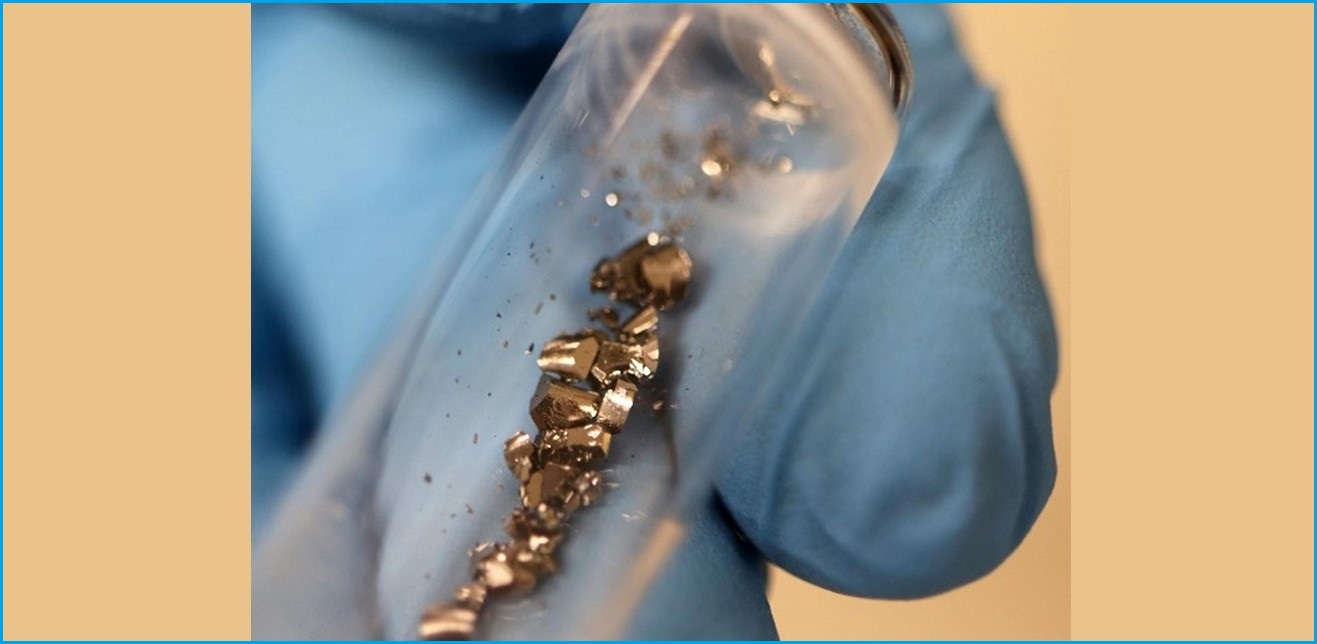A new superconductor material has been discovered by scientists in the US, paving the way for significant developments in quantum computers and even the creation of entirely new devices.
Two separate groups identified an unconventional kind of superconductor, uranium ditelluride (or UTe2 for short), which displays many of the hallmarks of what’s known as a “topological superconductor”.
Promising results show it has minimal resistance – the hallmark of a superconductor – in the outer topological layer, making a good foundation for quantum computers.
It’s well understood that superconductors carry electrical currents without resistance, but the scientific community has been endeavouring to find substances where the particular arrangement of the subatomic particles can transmit the current.
In UTe2, it is the ‘topology'that organises the arrangement of how the particles can changes and transform.
The hunt for the holy grail of superconductors
Scientists have been on the hunt for new quantum materials that will either advance the understanding of topology and superconductivity, or serve as a platform for advanced device technologies.
As yet, no other superconductor has been shown to be topological in experiments, until the discovery in relation to UTe2.
“In this case, we may have come across a material that serves both purposes,” said Dr. Johnpierre Paglione, professor and director of the Maryland Quantum Materials Center at the University of Maryland.
Most known superconductor materials are the “spin-singlet” types, where electrons pair up with opposite spin.
In this case, UTe2 appears to be a “spin-triplet” which is where electrons pair up, with both of their spin angular momenta pointing in the same direction, a much rarer kind of material.
“This property is a result of the ‘glue’ that binds the electrons together. In the triplet case, this glue is likely different to the majority of superconductors that pair up due to lattice vibrations (such as mercury, the first discovered superconductor from 1911) and therefore our studies of it help advance the understanding of so-called unconventional superconductors,” Paglione told Information Age.
“This is significant because this class of materials is where high-temperature superconductivity comes from, and has long been studied in search of the holy grail – room temperature superconductivity,” he said.
The promising potential of UTe2
Paglione and the scientists believes UTe2 is a substance with particular properties that can be used to perform fault-tolerant quantum computing and other quantum technologies.
“In UTe2, we believe that the superconductivity falls in this category, helping explain the occurrence of two distinct superconducting transition temperatures as well as a novel surface fluid of charged non-superconducting particles,” he said.
Researchers observed two distinct superconducting transition temperatures as well as a novel surface fluid of charged non-superconducting particles.
It’s this surface material, long sought-after by scientists, which may ultimately serve as a platform for devices that are able to perform quantum computations.
The scientists concede there is a long road from identifying material displaying these particular states to manipulating them in devices for the purposes of quantum computing.
Nonetheless, it is a milestone discovery.
“There are really only a handful of systems out there that have been identified (and most of them are engineered to have these states in some multi-material device setup rather than harbouring them intrinsically or naturally) and so the potential is there,” Paglione said.
The really exciting part in this is the known unknowns: the devices or concepts that will stem from a new understanding of these types of systems that don't necessarily fit into the mould of transistor-type technology.
“To follow this path, we need to experiment with devices that allow us to better understand the fundamental properties of these systems, as well as look for new methods of control of the states they harbour, and we are currently working on this,” he said.










